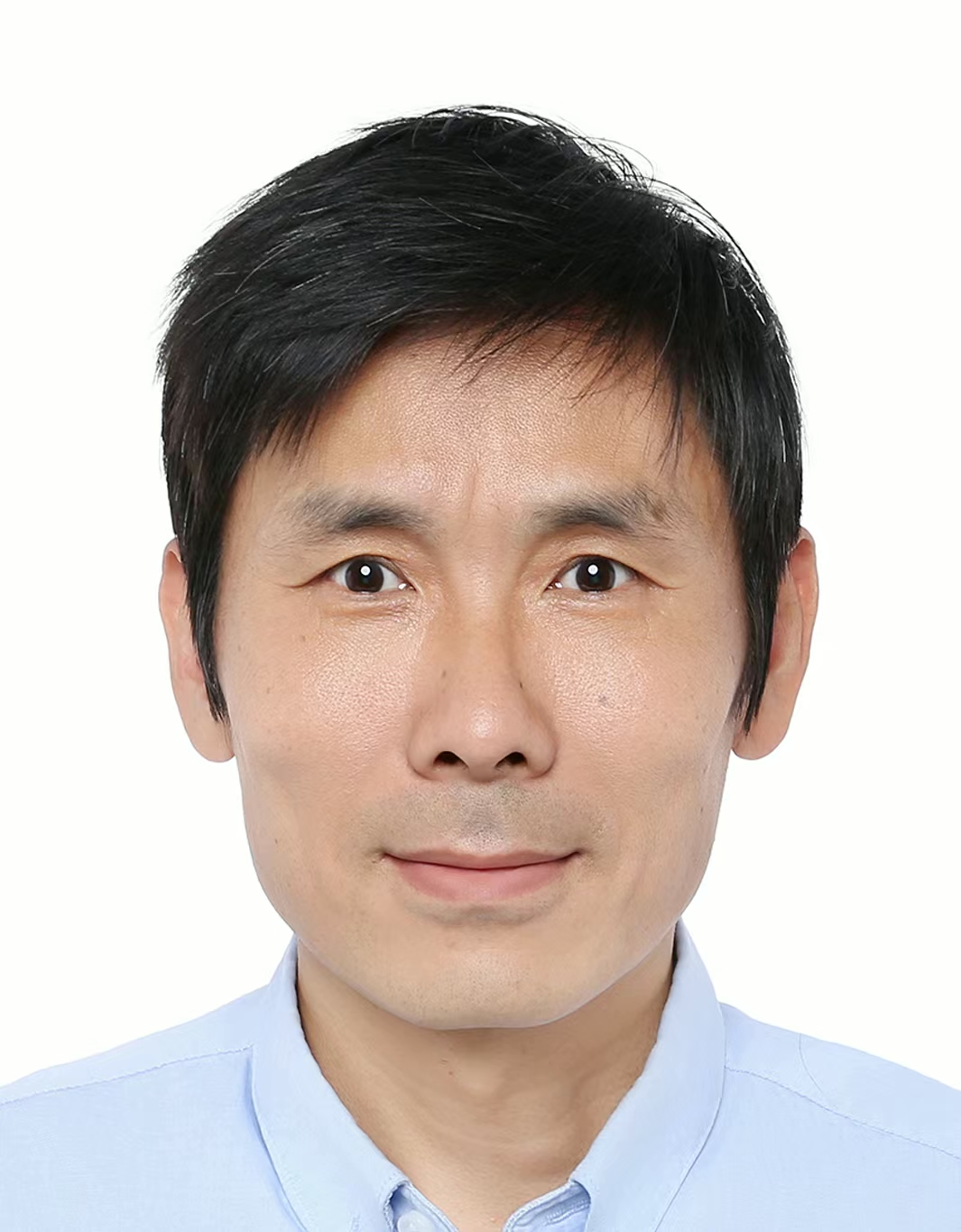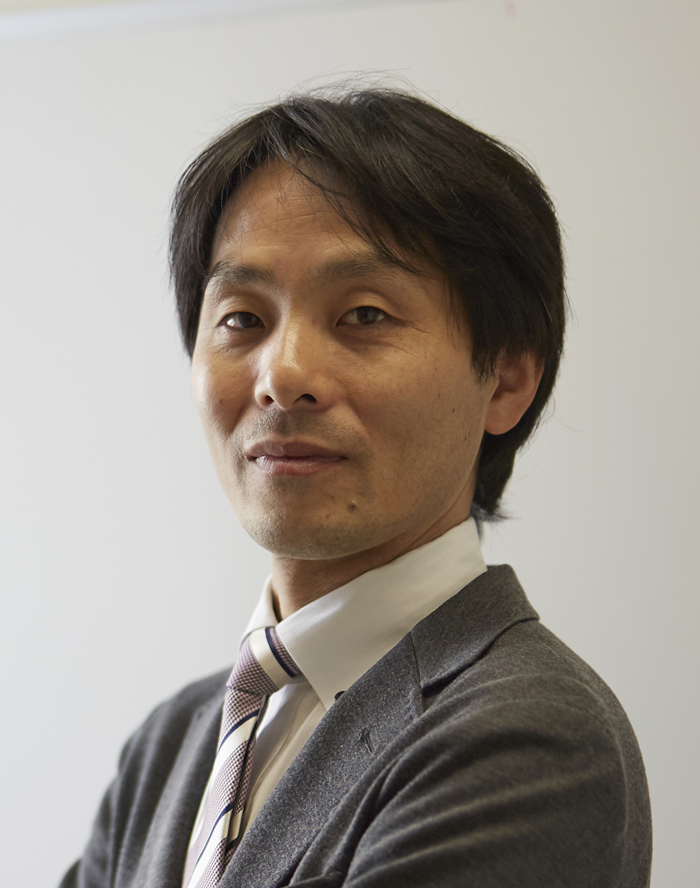 Keynote Talk I
Keynote Talk I
Robotics for Learning In-Vivo Knee Implants Motion Monitoring
Abderrahmane Kheddar, National Centre for Scientific Research in Frence
10:30-11:00, October 17 (Friday), Ballroom 1
Abstract:
Total Knee Arthroplasty (TKA) is among the most common orthopedic procedures worldwide, averaging about 175 procedures per 100,000 people annually, with more than 1.3 million operations performed each year across major registries. Despite this prevalence, up to 30% of patients experience unexplained postoperative pain. Conventional imaging, such as X-rays, captures only static implant positioning, while fluoroscopy and wearable goniometers either expose patients to radiation or fail to provide precise three-dimensional kinematics.
This keynote will present a novel approach for real-time, radiation-free tracking of implant motion with sub-degree and sub-millimeter precision. The method combines a sensorized knee brace with artificial intelligence trained through a dual-robot setup, where robotic arms manipulate implant components to emulate diverse and even abnormal knee motions. Proof-of-concept results demonstrate high accuracy and feasibility, opening the door to in-vivo monitoring that may significantly improve postoperative care and reduce implant-related complications. I will also discuss further envisioned extensions and the link with new tactile sensing technology and even humanoid robotics.
Biography:
Abderrahmane Kheddar received the BS in Computer Science degree from the Institut National d’Informatique (ESI), Algiers, the MSc and Ph.D. degree in robotics, both from Pierre et Marie Curie University, Sorbonne University, Paris. He is presently First Class Directeur de Recherche at CNRS. His research interests include haptics, humanoids and recently Bionics. He is a founding member of the IEEE/RAS chapter on haptics, the co-chair and founding member of the IEEE/RAS Technical committee on model-based optimization, he is a member of the steering committee of the IEEE Brain Initiative, Editor of the IEEE Robotics and Automation Letters, Founding member, Deputy Editor-in-Chief and now Advisory Board of Cyborg and Bionics System. He was Editor of the IEEE Transactions on Robotics (2013-2018) and within the editorial board of other robotics journals; he is a founding member of the IEEE Transactions on Haptics and served in its editorial board during three years (2007-2010). He is an IEEE fellow, AAIA fellow, titular full member of the National Academy of Technology of France and knight of the national order of merits of France.

Keynote Talk II
Biomimetic Underwater Robot
Guangming Xie, Peking University
9:30-10:00, October 18, 2025 (Saturday), Ballroom 1
Abstract:
Biomimetic underwater robots hold immense potential for wide-ranging applications in the exploration and development of the oceans. This presentation will provide an overview of the research advancements made by Professor Guangming Xie from Peking University in this field, covering topics such as motion bionics and learning control, perception bionics, communication bionics, gripper bionics, swarm behavior bionics, as well as some potential applications of biomimetic underwater robots.
Biography:
Guangming Xie is a full professor at the School of Advanced Manufacturing and Robotics, Peking University, Peking University. He earned his B.S. degrees in both Applied Mathematics and Electronic & Computer Technology, followed by an M.E. degree and a Ph.D. degree in Control Theory and Control Engineering, all from Tsinghua University, China, in 1996, 1998, and 2001, respectively. Subsequently, he served as a postdoctoral research fellow at the Center for Systems and Control, Peking University, China, from July 2001 to June 2003. He is the founder and director of the Intelligent Biomimetic Design Lab (IBDL). His research focuses on biomimetic robotics and multi-robot cooperation. To date, he has published over 200 papers and authored three books. From 2014 to 2024, he has been recognized as one of the Most Cited Chinese Researchers by Elsevier in the field of Control and Systems Engineering. In 2023, he was included in the top 2% of scientists worldwide for both career and annual impact, according to a ranking jointly released by Stanford University and Elsevier.

Keynote Talk III
Magnetic Micro-/Nanorobots for Biomedical Applications:
From individual and Modular Designs to Microswarm
Li Zhang, The Chinese University of Hong Kong
10:00-10:30, October 18, 2025 (Saturday), Ballroom 1
Abstract:
Robotics at small scales has attracted considerable research attention both in its fundamental aspects and potential biomedical applications. As the characteristic dimensions of the robots or machines scaling down to the milli-/microscale or even smaller, they are ideally suited to navigating in tiny and tortuous lumens inside the human body which are hard-to-reach by regular medical devices. Although the materials, structural design, and functionalization of micro-/nanorobots have been studied extensively, several key challenges have not yet been adequately investigated for in vivo applications, such as adaptive locomotion in dynamic physiological environments, in vivo localization with clinical imaging modalities, the efficiency of therapeutic intervention, biosafety, and their autonomy for the intervention tasks.
Biography:
Li Zhang is a Professor in the Department of Mechanical and Automation Engineering (MAE) and a Professor by Courtesy in the Department of Surgery at The Chinese University of Hong Kong (CUHK). He is also a director of the SIAT – CUHK Joint Laboratory of Robotics and Intelligent Systems; and a project leader in the Multi-scale Medical Robotics Center (MRC), InnoHK, at the Hong Kong Science Park. Dr. Zhang’s main research interests include small-scale robotics and their applications for translational biomedicine. He has authored or co-authored over 300 publications (H-index: 85), including Science Robotics (3), Nature Machine Intelligence (3), Nature Materials, Nature Synthesis, Nature Reviews Bioengineering, Science Advances (12), Nature Communications (6), as the corresponding author. His research work on artificial bacterial flagella was indexed by the Guinness Book of World Records 2012 for the “Most Advanced Mini Robot for Medical Use.” And his research works on magnetic slime robot and microrobotic swarm for endovascular application at CUHK was selected as “Top 10 Innovation and Technology News in Hong Kong” in 2022, 2023 and 2024, respectively, by the Beijing - Hong Kong Academic Exchange Centre. Dr. Zhang is elected as a Fellow of IEEE, ASME, RSC, FAAIA, HKIE, a senior member of the National Academy of Inventors (NAI), a member of the Hong Kong Young Academy of Sciences (YASHK), and an Outstanding Fellow of the Faculty of Engineering at CUHK. He is a Senior Editor of IEEE TASE and IEEE TRO (a top-journal on Robotics).
 Keynote Talk IV
Keynote Talk IV
Intelligent Soft Robots for Complex Environmental Interaction
Li Wen, Beihang University
10:30-11:00, October 17 (Friday), International Conference Room
Abstract:
Octopuses can whip their soft arms with a characteristic “bend propagation” motion to capture prey with sensitive suckers. This relatively simple strategy provides models for robotic grasping, controllable with a small number of inputs, providing a highly deformable arm with sensing capabilities. In this paper, we implemented an electronics-integrated soft robotic octopus arm (E-SOAM) capable of reaching, sensing, grasping, and interacting in a large domain. Based on the biological bend propagation of octopuses, E-SOAM employs a bending-elongation propagation model to move, reach, and grasp in a simple but efficient way. E-SOAM’s distal part plays the role of a gripper and can process bending, suction, and temperature sensory information under highly deformed working states by integrating a stretchable, liquid-metal–based electronic circuit that can withstand uniaxial stretching of 710% and biaxial stretching of 270%, and can autonomously perform tasks in a confined environment. By combining this sensorized distal part with a soft arm, the E-SOAM can perform a reaching-grasping-withdrawing motion across range up to 1.5 times its original arm length, similar to the biological counterpart. Through a wearable finger glove that produces suction sensations, a human can use just one finger to remotely and interactively control the robot’s in-plane and out-of-plane reaching and grasping both in the air and underwater. E-SOAM’s results not only contribute to our understanding of the function of the motion of an octopus arm but also provide design insights into creating stretchable electronics-integrated bioinspired autonomous systems that can interact with humans and their environments.
Biography:
Li Wen is a Professor and Vice Dean of the Department of Mechanical Engineering and Automation at Beihang University. He was honored as a Distinguished Scholar by the National Science Foundation of China in 2024. His research focuses on bio-robotics, soft robotics, and robotic intelligence. Throughout his career, he has authored over 140 articles in prominent journals and conferences, including Science Robotics, Science Advances, Nature Communications, IEEE Transactions on Robotics, and more. His groundbreaking work has been featured by leading scientific media outlets such as Nature, Science, MIT Technology Review, and BBC. Recognized for his contributions, he received the Steven Vogel Young Investigator Award and the Xiong Youlun Young Scientist Award in 2020. Additionally, Li Wen has served as an editorial board member for several prestigious journals, including Science Robotics, IEEE Transactions on Robotics (TRO), and the International Journal of Robotics Research (IJRR).

Keynote Talk V
Deep Muscle Activity Visualization to Explore Human Unconscious Motor Control
Shingo Shimoda, Nagoya University
9:30-10:00, October 18, 2025 (Saturday), Conference Room 1
Abstract:
Since muscle activity is one of the final outputs of the nervous system, it can serve as a “window” for observing its state. Much of our daily movement is controlled unconsciously, and detailed analysis of muscle activity can reveal physical and mental issues that are not apparent to conscious awareness. Accordingly, various methods, including needle electromyography, have been used to measure a wide range of muscle activities, including those of deep muscles. We have proposed a method for real-time estimation of functional muscle activity from high-density EMG and developed a technique to identify the causative muscles in patients with dystonia, thereby contributing to their treatment. In this talk, I will present our muscle activity estimation method and its application to treatment strategies.
Biography:
Shingo Shimoda received his Ph.D. in Engineering from the Department of Electronic Engineering, Graduate School of Engineering, The University of Tokyo, in March 2005. He is currently a Designated Professor at the Graduate School of Medicine, Nagoya University.During his doctoral research on asteroid exploration robots, he recognized the need for flexible artificial intelligence. After a period as a Visiting Student at MIT, he joined the RIKEN Brain Science Institute in January 2008 as a Unit Leader. There, he investigated the principles of motor control in the brain, identifying behavioral adaptation to unknown environments as a key source of flexible intelligence. He developed models that replicate motor learning through body–environment interaction, applying them to humanoid robot locomotion and myoelectric prosthetic control—work that earned him the Cognitive Robotics Best Paper Award at IROS. Since moving to Nagoya University in April 2023, Shimoda has been developing systems to visualize physiological signals, such as deep muscle activity and plantar pressure, and using these data to further elucidate the principles of motor control. As Project Manager of the Moonshot R&D Program, he has introduced the concept of “Unconscious Intelligence”—the human ability to adapt to unknown environments—and proposed methods to predict disease risk and enhance motor function through subconscious robotic interventions.